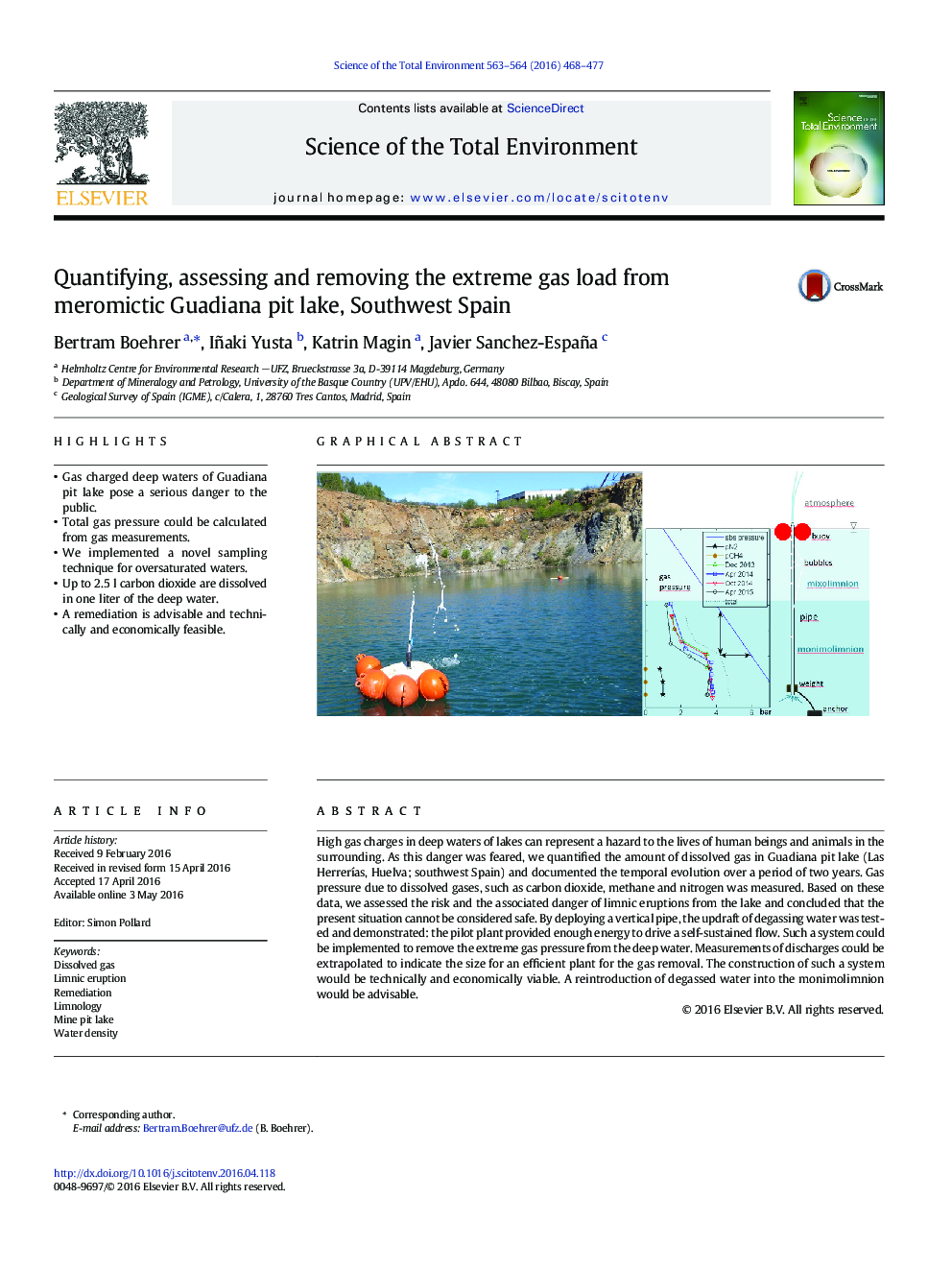| Article ID | Journal | Published Year | Pages | File Type |
|---|---|---|---|---|
| 6321439 | Science of The Total Environment | 2016 | 10 Pages |
â¢Gas charged deep waters of Guadiana pit lake pose a serious danger to the public.â¢Total gas pressure could be calculated from gas measurements.â¢We implemented a novel sampling technique for oversaturated waters.â¢Up to 2.5 l carbon dioxide are dissolved in one liter of the deep water.â¢A remediation is advisable and technically and economically feasible.
High gas charges in deep waters of lakes can represent a hazard to the lives of human beings and animals in the surrounding. As this danger was feared, we quantified the amount of dissolved gas in Guadiana pit lake (Las HerrerÃas, Huelva; southwest Spain) and documented the temporal evolution over a period of two years. Gas pressure due to dissolved gases, such as carbon dioxide, methane and nitrogen was measured. Based on these data, we assessed the risk and the associated danger of limnic eruptions from the lake and concluded that the present situation cannot be considered safe. By deploying a vertical pipe, the updraft of degassing water was tested and demonstrated: the pilot plant provided enough energy to drive a self-sustained flow. Such a system could be implemented to remove the extreme gas pressure from the deep water. Measurements of discharges could be extrapolated to indicate the size for an efficient plant for the gas removal. The construction of such a system would be technically and economically viable. A reintroduction of degassed water into the monimolimnion would be advisable.
Graphical abstractDownload high-res image (426KB)Download full-size image
